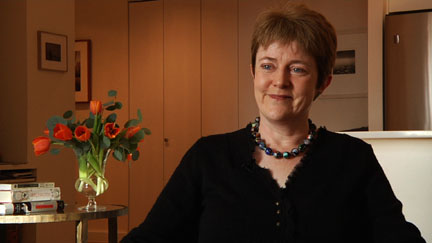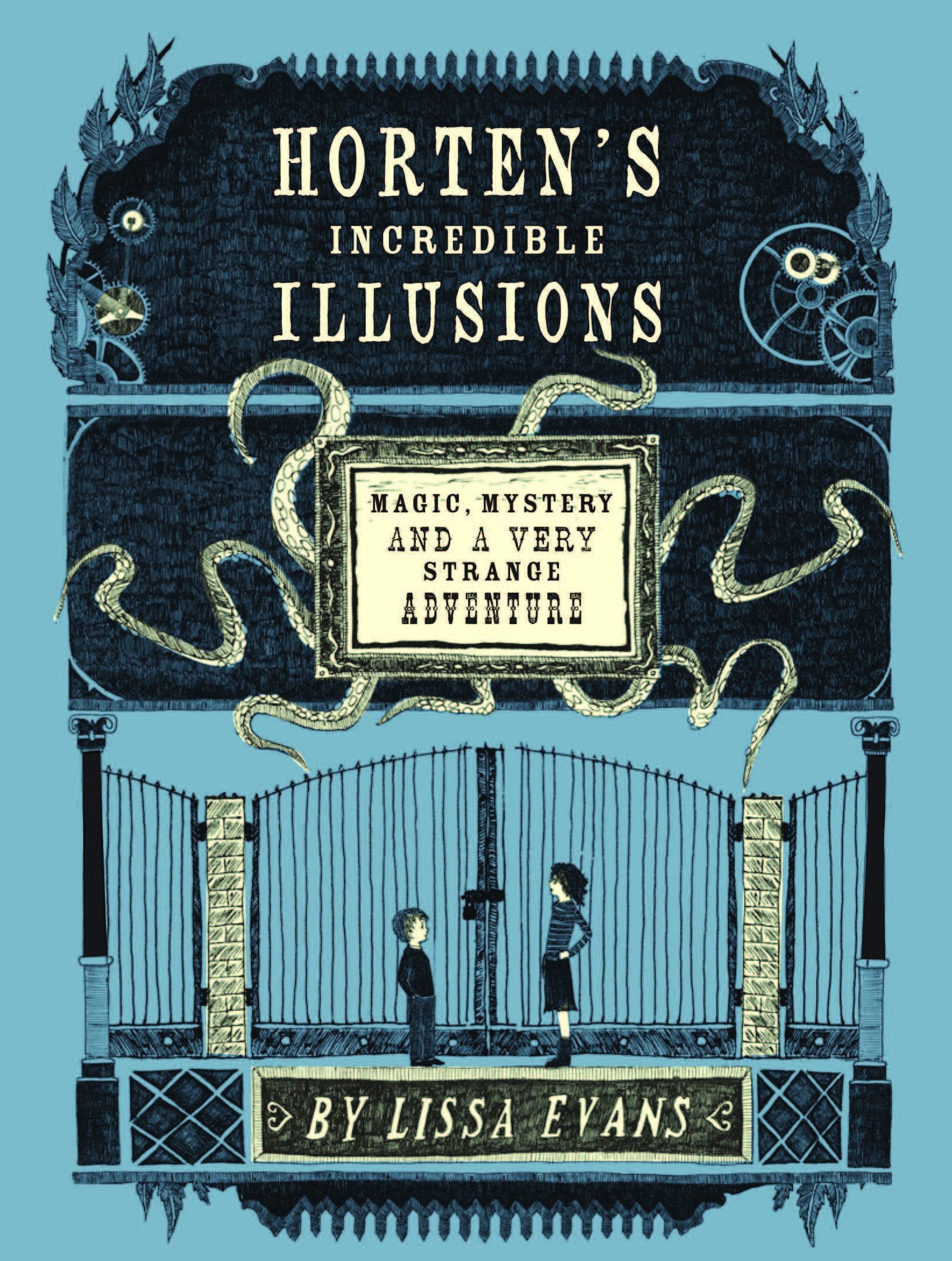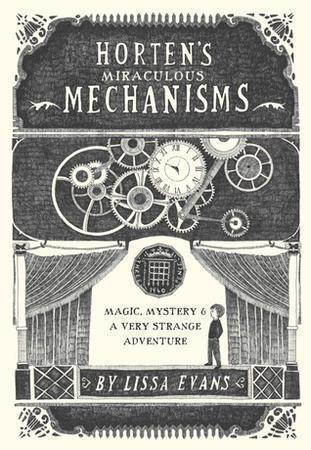 Lissa Evans is the author of five books including, “Horten’s Miraculous Mechanisms” and “Horten’s Incredible Illusions.” The following is a complete transcript of her interview about the two book with Cracking the Cover.
Lissa Evans is the author of five books including, “Horten’s Miraculous Mechanisms” and “Horten’s Incredible Illusions.” The following is a complete transcript of her interview about the two book with Cracking the Cover.
Have you always wanted to be a writer?
When I was six, I wrote my first story; it was about a hippo called Fred and I drew a picture of Fred at the top of the page. I also drew an arrow pointing towards his head and labeled it ‘Fred’s Head’ which I thought was brilliantly funny (so that was my first joke as well!) Since then I’ve always enjoyed writing, and cherished a vague dream of becoming a novelist one day, but it wasn’t until I was nearly forty that I actually sat down and started to write seriously and it’s only very recently ( after having 5 books published…) that I’ve actually started describing myself as a writer.
Why do you write for young people?
I think because I have a very clear memory of being 10 years old. I was a voracious reader and the books I loved best were ones that mingled magic and real life. ‘Horten’s Miraculous Mechanisms’ and ‘Horten’s Incredible Illusions’ are exactly the sort of books that I would have wanted to read at that age. It might also be something to do with the fact that I have ten year old twins …
Where did the idea for you Horten books come from?
The basic idea came from two different directions:
the memory of what it was like to move house right at the start of the summer vacation, when I was 10. I’d lived in a small village and we moved to a large and dreary town where we knew no-one – I was bored and lonely and I desperately wanted something extraordinary and wonderful to happen. It didn’t.
Seeing a small boy standing outside a coin-operated photo-booth at my local station. I started wondering what would happen if he put in an old, peculiar coin that had been left to him by a relative. Would he get something that he hadn’t expected, something that gave him a tantalizing glimpse of his family history….? (Incidentally, the photo-booth doesn’t actually appear in this book. Perhaps I’ll end up using it in another one.)
 Did you always plan on more than one book?
Did you always plan on more than one book?
No. It wasn’t until I was nearing the end of ‘Horten’s Miraculous Mechanisms’ that I realized that the discovery of Great Uncle Tony’s workshop wasn’t an end, but a fresh beginning…
Will we see more of Stuart and his friends in the future?
I’ve had a thought about a third book. There’s something mysterious about Beeton (the town Stuart lives in) that was touched upon in the first book, and which definitely needs investigating…
How did you come up with all the different illusions?
When I was about twelve, I bought a book in a second-hand bookshop which was actually written for stage magicians. It revealed how tricks worked, and it gave me a tremendous insight into the world of stage illusions. When I was writing ‘Horten’s Incredible Illusions’, I started by thinking about how each trick would look to a member of Great-Uncle Tony’s audience – I needed the devices to be simple enough to explain, but complex enough to fool a theatre full of people.
It helped that I’d already described the appearance of the tricks in the first book – I had a starting point for each one.
In both books Stuart and April have to solve a number of clues. Was it difficult to incorporate those into the mechanisms and illusions?
The first book evolved as I wrote it, each clue popping up as I went along, the plot strands gradually linking together – it was a bit like knitting, and sometimes I had to go back and disentangle bits of it, or pick up dropped stitches. The second book was, in some ways, slightly easier to write. Once I had realized that each illusion had an adventure attached, the plot was rather more straight forward, though (like the first) I did very little planning ahead. When I’m writing, I hardly ever know what’s going to happen on the next page…
Stuart and April have an interesting friendship. Why was it necessary for Stuart to have a friend to help him on his journey?
There was a point in the first book when I realized that the quest couldn’t be completed by Stuart alone, and that he needed to form a bond with one of the triplets – and once I had two main characters, the potential for adventure and comedy suddenly doubled; I loved writing Stuart and April’s dialogue, and once they got talking, the plot just seemed to whizz along.
 Why do you think young people enjoy your books?
Why do you think young people enjoy your books?
I hope because they’re mysterious and satisfying and funny…
Looking back, how has your writing evolved?
I haven’t changed my writing style, nor my pleasure in writing dialogue and characters that make me laugh, but my later books have a stronger overall plot than the earlier ones. My third novel (for adults) was the first time that I had a plot that you could actually sum up in a sentence (the making of a British feature film during the second world war)!
What are you working on now?
I’m halfway through my fourth novel for an adult which, like the third, is set during the second world war. I’ve also started another (non-Stuart) children’s book, and am fiddling around with ideas for the third Stuart adventure. I like having more than one book on the go…
Is there a particular book from your childhood that really resonates with you?
It’s hard to pick just one, but maybe ‘The Diamond in the Window’ was the book that has stayed with me the longest, and which probably influenced ‘Horten’s Miraculous Mechanisms’ the most . It’s by an American author, Jane Langton, and is about a brother and sister on a magical treasure hunt within their large, eccentric house in Concord, Massachusetts
